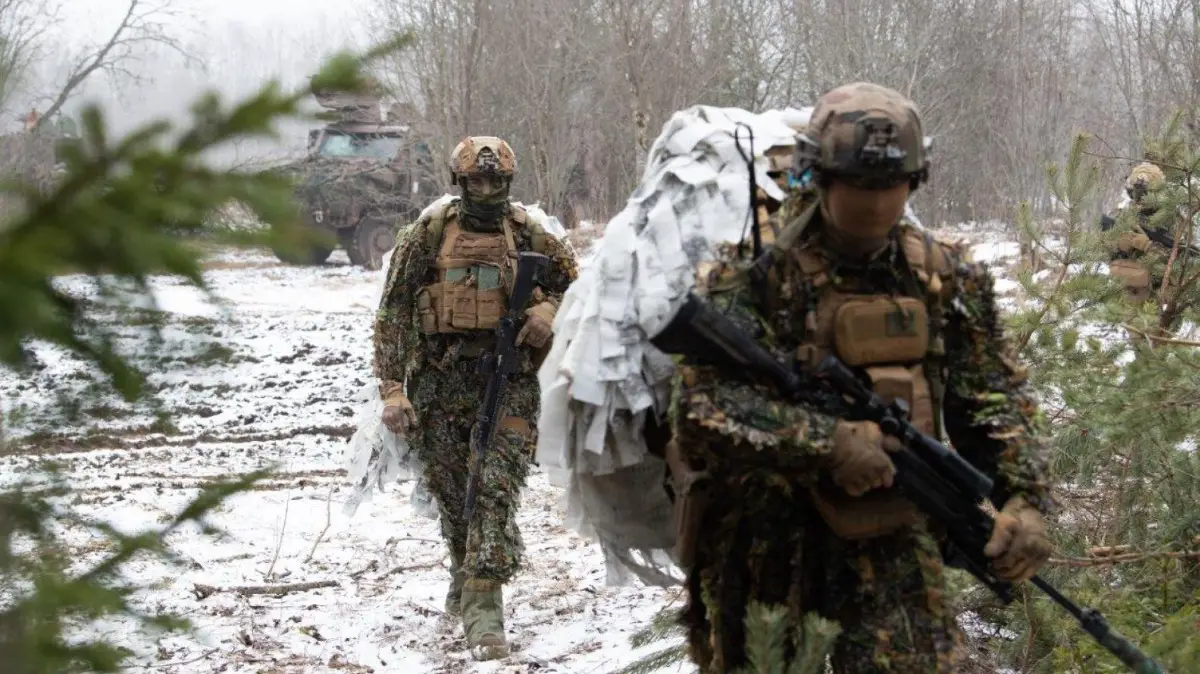On April 3-5, soldiers with the 13th Demi-Brigade of the French Foreign Legion, who are assigned to NATO enhanced Forward Presence (eFP) Battlegroup Estonia, conducted an assault drill at the Tapa military training area in Estonia. The exercise aimed to develop soldiers’ capabilities for combined arms operations, and it allowed leaders to operate in a simulated combat environment while focusing on tactics necessary to maintain mission readiness.
During the first phase of the exercise, the French service members had to react to a mine threat. An initial reconnaissance was conducted by combat engineers, while other tasks were carried out with a Black Hornet drone. After having determined the enemy’s location, strength and dispositions, the Foreign Legionnaires dismounted from their multi-role armoured vehicles ‘Griffon’ and gained the upper hand on the opposing force.

The assault drill served as a means to sharpen the French contingent’s tactical edge ahead of the upcoming training events such as exercise Bold Hussar. Planned for mid-April, it will integrate all elements of the UK-led battlegroup into the Estonian 1st Infantry Brigade. The French Army has been deploying its forces to the Baltic Sea region with NATO’s enhanced Forward Presence as part of what is called in France Mission Lynx.
The French Foreign Legion (Légion étrangère) is a corps of the French Army that consists of several specialties: infantry, cavalry, engineers, airborne troops. The legionnaires are an integral part of the French Army. Today, they constitute some 7–8% of its strength (or 11% of the Ground Operational Forces, FOT, French Army operational units). The Foreign Legion is the only unit of the French Army open to people of any nationality. Most legionnaires still come from European countries but a growing percentage comes from Latin America and Asia.















